If you love hunting and bird watching, there are a few tools you’ll never lack in your arsenal. These include a trail camera, camping tent, rifle or bow, and of course, a binocular. This time, though, we are going to talk about binoculars.
It might not surprise anyone who hasn’t done it before but buying binoculars isn’t so simple. You need to have quite a bit of understanding on how binoculars work and what its various features are – magnification, objective lens diameter, eye relief, field of view, exit pupil diameter… we can go on and on. And then there’s the reason why you want to buy binoculars in the first place.
Are you planning on doing some bird watching, stargazing, hunting, whale watching, or spying on someone? The specifications you need will differ based on your purpose. So, how do you figure out which one’s right for you? Well, it takes a lot of time, we’ll give you that. And it can be confusing. If you’re not comfortable with going over all that technical jargon and what it will do for you, then you can just check out our 10 best binoculars below for every application imaginable.
Top 10 Binoculars Of 2020 Reviewed
1. Nikon 7577 MONARCH 5 Binocular
 Best Binoculars For Birding
Best Binoculars For Birding
| Magnification | Lens Diameter | Eye Relief Size | Weight |
| 8x | 42mm | 19.6mm | 21.5 ounces |
The Monarch 5 Model 7576 is our pick as the best binoculars for a variety of applications. It features extra-low dispersion glass lenses that ensure you get the superior contrast and brighter images even in low light conditions. The Dielectric, High-Reflective Multilayer Prism Coating also provides true color rendition. The turn-and-slide rubber eyecups provide more than enough eye relief for anyone with eyeglasses.
It’s incredibly lightweight but built to last. It’s 100% waterproof, fog proof, and shockproof. And then there’s a rubber-armored coating that increases durability and ensures that you can hold it comfortably in all kinds of conditions. The focus of the Monarch can reach as close as 8-9 feet. However, the case doesn’t have a neck strap, just a loop. If you’re birdwatching, taking it in and out of the case from your belt can be very inconvenient. The eyepiece cover easily comes off and you can easily lose it when you’re busy exploring wildlife.
Pros:
- Good eye relief
- Bright, vivid images
- Lightweight
Cons:
- Eyepiece covers are loose
- The case doesn’t have a neck strap
2. Celestron SkyMaster Giant 15×70 Binoculars
 Best Binoculars For Stargazing
Best Binoculars For Stargazing
| Magnification | Lens Diameter | Eye Relief Size | Weight |
| 15x | 70mm | 18mm | 48 ounces |
Any stargazer worth his salt will tell you that the Celestron SkyMaster Giant Binoculars is one of the best you’ll find. It features multi-coated optics, large 70mm objective lens, a large center focus dial, soft rubber eyecups, and rugged armoring. It uses BaK-4 prism glass and produces sharp, clear views. The accessories included are objective lens caps, a rain guard, a tripod adapter, a carrying case, a neck strap, a lens cloth, and an instruction manual. Field of view is 230 feet while close focus distance is 52.5 feet.
This is obviously not something you want to use birdwatching, hunting, or at concerts. For the price, it really can’t be beaten. In terms of quality, you couldn’t ask for a more stunning image. Contrast is very good. The main drawback to using these binoculars is its weight. It’s definitely not for kids without the tripod. Even an adult may have a hard time holding it with both hands. It’s certainly not something you want to take hiking with you. Also, the focus isn’t easy to adjust. The tripod is kinda wobbly; stable but you can get better.
Pros:
- Amazing images
- Plenty of accessories
- Great contrast
Cons:
- The focus isn’t easy to adjust
- Tripod is unsteady
- Very heavy
3. Vortex Optics Diamondback 10×42 Roof Prism Binocular
| Magnification | Lens Diameter | Eye Relief Size | Weight |
| 10x | 42mm | 16mm | 21.4 ounces |
The Vortex Optics Diamondback 10×42 is one of the best hunting binoculars we’ve tested. It features multi-layered dielectric coatings and phase-corrected prisms for sharp resolution and great contrast. It is waterproof and fog proof. It comes with a rain guard, tethered objective lens covers, neck strap, and custom-molded carry case. One thing that makes this stand out is its ability to produce crisp, clear images in low light. The right eye diopter adjustment is easy to use.
The binoculars can be focused quickly. Two things that are important when you’re on a hunt. The barrels feature thumb indents that make holding your binoculars comfortable and slip-free. These babies are slim which is perfect for the hunter who wishes for less bulky gear. The company backs their product with a VIP Unconditional Lifetime Warranty which means they’ll fix your binoculars for free, no question asked. However, the lens covers sometimes fall off which can be annoying when you’re focusing on something else. Also, we wish they could have used extra-low dispersion glass like what we see in the Vortex Viper (which we’ll review later). Also, it doesn’t have a special coating (ArmorTek) to prevent scratches on the lens.
Pros:
- VIP Unconditional Lifetime Warranty
- Quick focus
- Ergonomic design
Cons:
- Lens cover falls off
- Not extra-low dispersion glass
- No scratch-proof coating
4. Bushnell Falcon 133410 Binoculars
 Best Binoculars For Concerts
Best Binoculars For Concerts
| Magnification | Lens Diameter | Eye Relief Size | Weight |
| 7x | 35mm | 12mm | 21 ounces |
Bushnell has been around for decades and is well-known for creating top quality microscopes, telescopes, rifle scopes, and binoculars. So, it’s really no wonder that we’ve got one of its binoculars on our list. The Bushnell Falcon features an auto-focusing Porro prism that ensures you’re able to reduce the amount of time needed to get a clear focus on your target.
It has fully coated lenses that provide stunning clarity. The non-slip rubber grip pads ensure the binoculars never slip from your hands. And the field of view – all 420 feet – ensures you never miss a thing, whether you’re watching a game from the bleachers or watching for whales. However, the fold-down eyecups only provide you with 12mm of eye relief which is “shallow.” 15mm would be preferable. The nylon case isn’t great either and the lens covers don’t fit well.
Pros:
- Quick to focus
- Lightweight
- Good value for the price
Cons:
- Cheap case
- Lens covers don’t stay on
- Eye relief is too low
5. Athlon Optics, Midas, Binocular, 8 x 42 ED Roof
 Best Binoculars For The Money
Best Binoculars For The Money
| Magnification | Lens Diameter | Eye Relief Size | Weight |
| 8x | 42mm | 17.2mm | 25 ounces |
The Athlon Optics Midas ED binoculars strike the perfect balance between clarity, image brightness, and weight. It provides you with incredibly sharp images whether you’re looking at objects in glaring sunlight or in the dark. It has a close focus of 6.5 feet so you can enjoy watching butterflies or any up-close object. The field of view is 426 feet at 1000 yards, one of the widest we’ve tested. The Midas ED has a wide range of focal depths which means you can be very precise on the level of focus you want.
And it moves through these different levels smoothly and quickly that you never have to feel the frustration of turning the knob and never finding the precise focal depth that you want. One thing that did annoy us when using this pair of binoculars is the lens cap. They were the press-in kind that tended to fall out quite a bit. Also, you might want to take note that this is slightly heavier than other binoculars. Not much of a difference if you look at it but you’ll definitely feel the difference after lugging it around your neck for a couple of hours.
Pros:
- Sharp images
- Wide field of view
- Close focus of 6.5 feet
Cons:
- Slightly heavy
- Press-in lens caps keep falling out
6. Tasco TAS169735-BRK Essentials Binoculars 7×35
 Best Binocular for Adventure
Best Binocular for Adventure
| Magnification | Lens Diameter | Eye Relief Size | Weight |
| 7x | 35mm | 16.5 | 21.5 ounces |
Are you looking for the best binoculars for adventure? If you like the outdoors, the Tasco TAS169735-BRK Essentials Binoculars is all you need. It is capable of spotting a target fast at a distance of up to 1,000 yards. The binoculars come with a focus-free feature, which makes the image appear sharp and clear. All you need to do is spot the target to look at it very closely.
The 7x35mm binoculars aren’t meant to view objects from a close range. No matter how far the objects are, they get magnified seven times and appear big enough. This is a pair of midsize, lightweight binoculars, which won’t leave you tired or get wobbly for handling. The 5mm exit pupil provides the best viewing in daylight or under stadium floodlights. They come with a 12mm eye relief, which is great for people who wear glasses. The housing is rugged and weather-resistant and features a rubber armor coating.
Pros:
- The binoculars are focus-free
- Suitable for single-handed use
- They come with foldable rubber eyecups
Cons:
- Gives blurred images in a closer view
- Not water-proof and fog proof
- May not work well in low light
7. Bushnell Powerview Compact Folding Roof Prism Binocular
| Magnification | Lens Diameter | Eye Relief Size | Weight |
| 10x | 32mm | 12mm | 12.4 ounces |
The PowerView is a roof prism binocular that features fully-coated lenses, BK-7 prism glass, non-slip rubber armor, and fold-down eyecups. It has a close focus of 25 feet which means you aren’t going to be able to use this for looking at up-close objects. But it’s not designed for that anyway.
This particular pair of binoculars from Bushnell is perfect for watching sports, amateur birdwatching, or observing the great outdoors while out on a hike. You can also use this for watching concerts, plays, and symphonies. It’s what you give to your kid for light recreational use. It’s compact and very light; perfectly portable in your pocket. It feels solid in your hand, not flimsy. However, it’s not waterproof or fogproof. It’s not built for medium to heavy use. Also, it is not ideal to use in dim conditions. Its field of view is just 240 feet while the eye relief is just 12mm.
Pros:
- Affordable
- Light recreational use
- Solid build
Cons:
- Not waterproof/fog proof
- Not for heavy use
- Not for dimly lit environments
8. Wingspan Optics Spectator 8X32 Compact Binoculars
| Magnification | Lens Diameter | Eye Relief Size | Weight |
| 8x | 32mm | 15mm | 15.2 ounces |
This pair of binoculars features BaK-4 prism glass and a central focus system that provides you crisp image details and bright colors. You can use it for birdwatching or spectator sports. You can use it at concerts or have it in your luggage for some recreational sightseeing while on vacation. It’s light but durable. It has a non-slip grip so you don’t need to be worried about dropping it as you hike around in wet weather.
It is waterproof as well as fog proof – something you rarely see in something as small as this pair. The binoculars come with a neck strap, a nylon mesh carrying case, eyepiece and lens protection covers, and a non-abrasive cleaning cloth. Wingspan Optics backs this product with a lifetime warranty as well as a 30-day money back guarantee. One thing that we didn’t like was the lens covers are hard to put on; the fit was a bit tight. Close focus is approximately 13 feet which means you won’t be watching anything up-close with this one.
Pros:
- Lifetime warranty + 30-day money back guarantee
- Waterproof + fog proof
- Crisp image details
Cons:
- Close focus is 13 feet
- Not as pocket-sized as advertised
9. Aurosports 10×25 Folding High-Powered Compact Binoculars
| Magnification | Lens Diameter | Eye Relief Size | Weight |
| 10x | 25 mm | 16.5 | 0.75 lbs |
So as to have the perfect viewing experience in the outdoors, you need a dedicated pair of binoculars to do just that. The Aurosports 10×25 Folding High-Powered Compact Binoculars are designed for use in wet conditions since they are waterproof. Thanks to the long-lasting anti-slip grip, these binoculars will stay in your hands throughout the time you will be using them. Not only are these binoculars lightweight but you can easily fold and conveniently carry them wherever you want to use them.
Promising a large field of view for extremely vivid details over a distance of up to 1,000 yards. Perfect for bird watching, these binoculars are great for use during the day and at night, even though the night vision is at the lowest level. They have a 25mm lens, which magnifies objects 10 times. These binoculars are perfect for outdoor sports, bird watching, sailing, hiking, hunting, and concerts. When all is said and done, this is the best high-powered compact binoculars. You will love it.
Pros:
- Provides for a large field of view
- Waterproof and suitable for use in the outdoors
- Lightweight, foldable, and easy to carry
Cons:
- May fail in pitch dark nights
- Reports of a low optical quality
- Includes poor quality straps
10. Vortex Optics Viper HD Roof Prism Binoculars 10×50
 Best HD Binoculars
Best HD Binoculars
| Magnification | Lens Diameter | Eye Relief Size | Weight |
| 10x | 50 mm | 16.5 | 2.89 lbs |
Looking for a pair of binoculars with the ability to deliver exceptional image resolution and edge-to-edge clarity? The Vortex Optics Viper brings to you the best HD binoculars. The lens has an XR anti-reflective coating, which full views that are bright enough to be clear even in dim light. With the 50mm lens, the objects are magnified 10 times. The image clarity is unmatched even at greater distances. It comes with a rubber-coated chassis, which is exceptionally easy to grip.
In order to focus squarely onto your eyes, these binoculars come with a right-eye diopter, which easily locks into place. Another great thing you should expect from these binoculars is the ability to easily focus and gest sharp views, quickly. No matter your facial features, you will get effective eye relief, thanks to the convenient twist-up eyecups. Apart from being the best HD binoculars, this product is both fog proof and waterproof. Needless to say, they are perfect for use in the outdoors. The outer lenses are protected from dirt, oil, and scratches, thanks to the armotek protection.
Pros:
- The stain-free lens remains clear for day-long use
- Easy to focus
- The rubber-armored chassis is easy to grip
Cons:
- Reports about front caps remaining open
- May not work well at night
- Made in china
How to Choose the Best Binoculars: the Ultimate Buying Guide
You can miss out on a lot of things if you can’t see the tiny details. With the right pair of binoculars, your eyes won’t be able to miss a moment, whether it’s a lion chasing after the game in the safari or watching the sweat drip from the pitcher’s brow from the bleachers. Well, you don’t really need to see someone sweat but you get our point. In whatever adventure you are in – hunting, bird watching, whale watching, horse racing, stargazing, etc. – you will always want a stunning view.
Because binoculars have a wide range of applications, it comes in a variety of sizes, shapes, and weight. And then there are numerous technical parameters. So, how do you spot the one that will give you that fantastic view? Well, this guide should help you navigate the world of binoculars.
What are Those Numbers for?
When you’re shopping for binoculars, you’ll notice that there is always a set of numbers listed in the description – 7×35, 8×42, or 10×50. These numbers indicate the magnification power of the binoculars and the objective lens diameter.
Magnification
The magnification is the first number listed and shows how many times closer you’ll see an object compared to looking at it with your naked eye. For a pair of 7×35 binoculars, the object will look like it’s 7 times closer. With the same binoculars, an object that is 70 feet away will look like it’s only 10 feet away.
Does this mean that the higher the magnification, the better? Not necessarily. A higher magnification means a more narrow field of view (more on this later). You’re less likely to see individual birds in a flock of birds with a 10x than with a 7x because you’re going to be “zooming in” the view. Inversely, you’re going to see more of the bigger picture with lower magnification. Also, when you increase magnification, you decrease the image brightness. More importantly, high magnification requires you to hold the binoculars steadily as it exaggerates the shaking of your hand.
So, which is the right magnification? It all depends on your purpose. If you’re going to use it for the theater, 3x to 5x magnification is fine. If you’re going to be watching a football game from the bleachers, 7x like what you get with the Bushnell Falcon 133410 Binoculars is good enough. Birdwatching may require higher, like 8x to 10x. Binoculars for stargazing typically require 10x to 30x like the Celestron SkyMaster Giant 15×70 Binoculars.
Objective Lens Diameter
The second number you see, the one after the magnification number, is the measurement of the lens on the far side – the one you use to look out. So, a pair of 8×42 binoculars have a 42-diameter lens. What does this do? Well, the diameter of your lens determines how much light enters your binoculars. Larger diameter means the brighter the image will be because more light gets to come in. It also means that you’ll have a larger field of view. However, the larger the lens also means that the binoculars will be heavier and bulkier.
What Other Important Specs should I Know About?
Exit Pupil
This is how much light reaches your eye from the objective lens. It is measured in millimeters and ideally should be larger than the size of your pupil. To get the exit pupil of binoculars, you will need to divide the objective lens diameter by the magnification. For example, to calculate the exit pupil of an 8×42 binoculars, divide 42mm by 8x which is equal to 5.25mm.
Keep in mind that the bigger the exit pupil, the more light comes through so the image will be brighter as well. If the exit pupil is almost or equal to the size of your own pupil, it will be difficult to get a clear image. This is because you’ll need to make sure that your own pupil is centered exactly on the binoculars’ exit pupil. The rule of thumb is to get an exit pupil that’s larger than yours.
Eye Relief
This is a very important feature for individuals who wear eyeglasses. Eye relief refers to the fixed distance between your eye and the binoculars that still allows you to see the entire image. If your eye is too close the lens, a crescent shadow will appear and shift around the edge of the circumference of your view. If your eye is too far, past the eye relief, then a shadow will appear across the entire circumference of your field of view, constricting it (making it smaller). As a general guideline, you’ll need at least 15mm or more of eye relief if you wear eyeglasses. For example, our number one pick – Nikon 7577 MONARCH 5 Binocular – has more than 19mm eye relief.
Field of View
Field of view is the area that you will be able to see using your binoculars at 1000 yards. It can be measured by feet. The angle of view is the same thing but its measurement is in degrees. If the manufacturer only provides degrees, you can get the field of view by multiplying that number by 52.5 which is the number of feet per 1 degree at 1000 yards. For example, a 6-degree angle of view has a field of view of 315 feet.
Lens Coating
Around 5% of light is reflected back every time light enters or exits glass. A lens coating is applied to reduce reflections as well as glare. It also results in more vivid colors and increased light transmission.
The traditional lens coating material used is magnesium flouride. It can decrease the amount of reflection from 5% to 1%. Modern coatings are more complex, consisting of multi-layers. Lenses can come uncoated, coated (only a single layer of coating), multi-coated (several layers of coating), or fully coated (all surfaces have multiple coatings).
Prism Type
The prism glass that is used in a pair of binoculars will often determine the price. And there are several prism glass designations to choose from. The most popular ones are BaK-4, SK-15, or BK-7. BK7 is Borosilicate Crown Glass which is the cheapest option and often used in making porro prism binoculars such as Bushnell Powerview Compact Folding Roof Prism Binocular. BaK4 is Barium Crown which is high-density glass which provides better light transmission and sharper images. Athlon Optics, Midas, Binocular, 8 x 42 ED Roof, for example, uses BaK4 prism. SK-15 is very high-density glass which reduces reflection and provides a crystal clear image and the best contrast.
Rubber coating and Waterproofing
While they are often considered synonymous by some people, they are actually not. Rubber coating does not prevent your binoculars from getting damaged by water. What it does is protects it from scratches and bumps as well as makes it easy to hold in your hands even under wet conditions. Waterproof seals, on the other hand, will help protect your binoculars from water as well as internal fogging.
What’s the Difference Between a Porro Prism and a Roof Prism?
There are two prism systems that can be used in making binoculars. The Porro Prism is what we typically see in traditional or old-school binoculars. It gives the binoculars its weird shape. The prism has a Z-shaped optical path, with the objective lens offsetting from eyepieces. This makes them bulky. The biggest advantage of using this design is a wider field of view with more light gathering capacity. However, binoculars with this design are more vulnerable to alignment problems when dropped. And they’re less likely to be waterproof.
The roof prism design, on the other hand, feature objective lenses and eyepieces are in line with each other which makes them more compact. This makes the binoculars have a more streamlined, compact shape. It also makes them more durable. Because this design is pretty complex to ensure the same optical quality provided by the Porro prism, binoculars with the roof prism design tend to be more expensive.
How Much Does a Pair of Binoculars Cost?
Well, the prices of binoculars actually vary a lot. You can find some as budget-friendly as $30 as well as some that can cost you upwards to $3000. For occasional stargazing or bird watching, you can stick with something inexpensive – around $50. If you want something a bit more durable with better image quality, mid-range pieces cost $80 to $150. Expensive ones that are a good value like Vortex Optics Viper HD Roof Prism Binoculars cost $300 to $500. These often include waterproof and fog proof features.


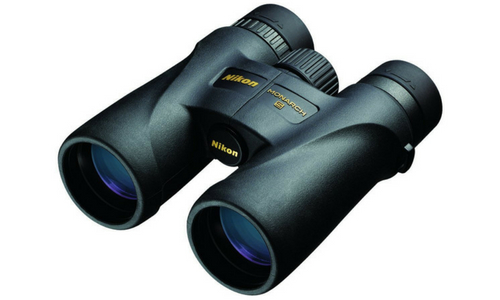
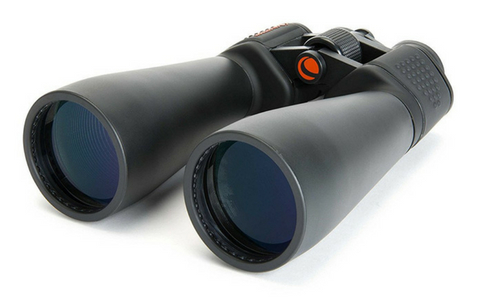
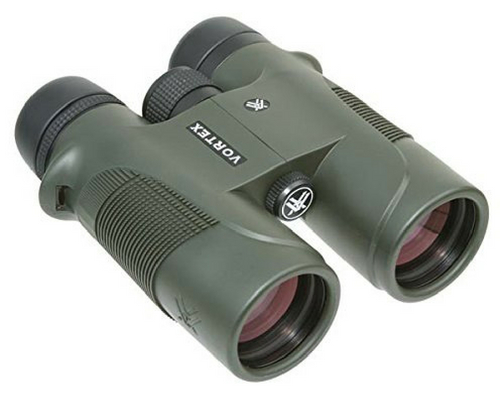
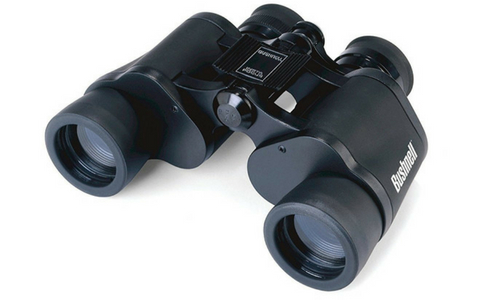
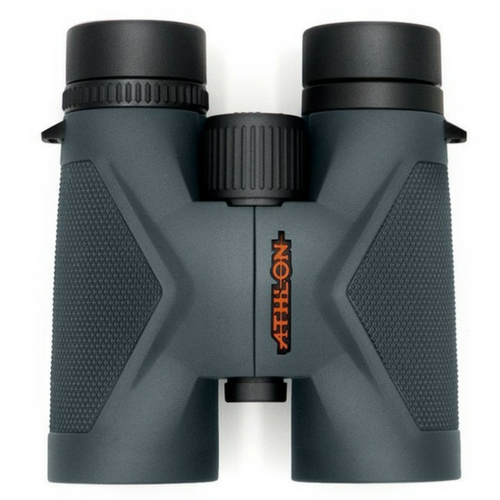

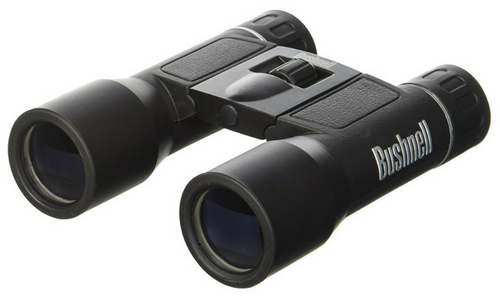
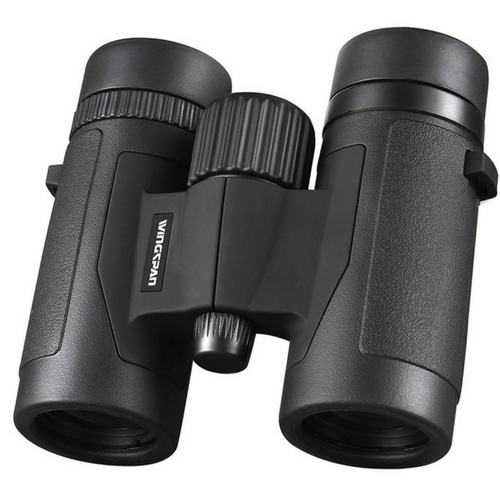
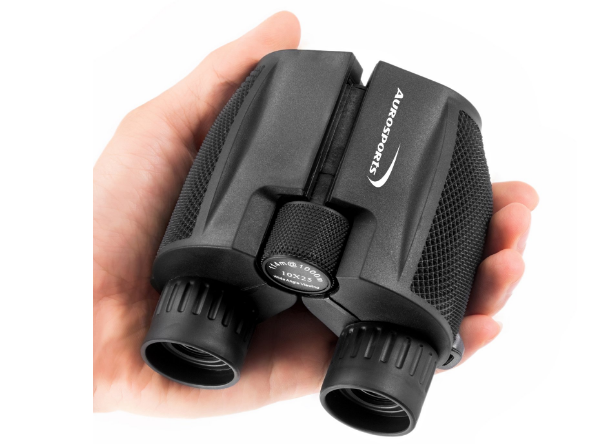
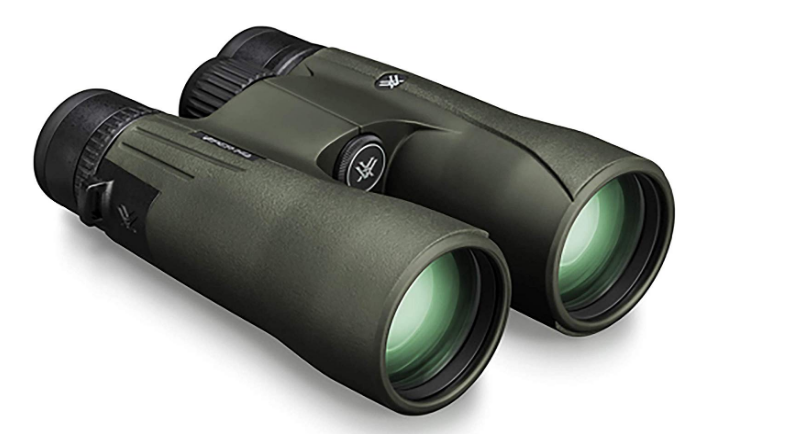
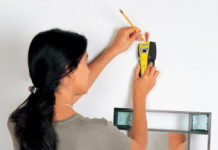
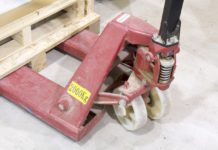
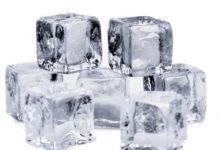
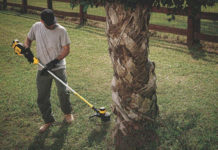
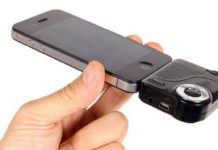
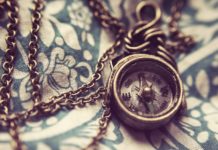





![Best Crochet Hooks for Beginners and Pros [2020 Update] best crochet books](https://www.awebtoknow.com/wp-content/uploads/2018/01/best-crochet-books-100x70.jpg)
![Best Cordless Screwdrivers – Electric And Powerful for Your DIY Projects [2020 Update] best cordless screwdriver](https://www.awebtoknow.com/wp-content/uploads/2017/10/best-cordless-screwdriver-100x70.jpg)

